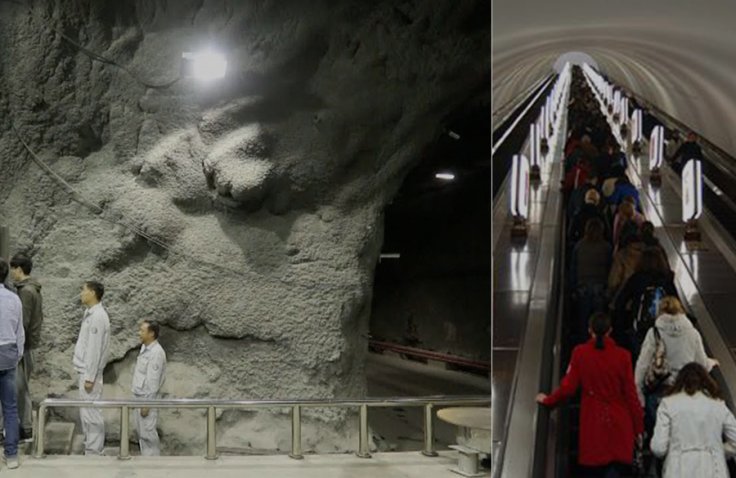The history of dark matter dates back to the early 20th century, with Swiss astronomer Fritz Zwicky identifying mass calculation discrepancies in galaxy clusters. In the 1930s, Jan Oort observed similar irregularities in galaxy rotation. The term "dark matter" gained prominence in the 1970s, thanks to Vera Rubin's groundbreaking work on galaxy rotation curves. Her findings provided compelling evidence for the existence of this elusive substance. Subsequent studies, including Cosmic Microwave Background observations, further supported the case for dark matter.
Today, the ongoing quest for dark matter drives advancements in underground laboratories and innovative detector technologies, marking a continuous pursuit to unravel the universe's hidden mysteries.

Now China has inaugurated the world's largest and deepest underground laboratory, the China Jinping Underground Laboratory-II (CJPL-II), with a primary focus on unraveling the mysteries surrounding dark matter. This state-of-the-art facility, located approximately 7,874 feet below the surface in southwest China's Sichuan Province, officially opened its doors in December 2023, expanding upon the original CJPL facility initiated in 2010.
Spanning over 11.6 million cubic feet, CJPL-II surpasses the size of Italy's Gran Sasso National Laboratory, the previous record holder. The facility, nestled within the mountains of Sichuan, aims to provide an ideal environment shielded from cosmic radiation to study dark matter, which constitutes an estimated 95% of the universe.
Dark matter, though pervasive, is notoriously elusive. Visible matter's gravitational force is insufficient to explain the cohesion of fast-moving galaxies, leading scientists to postulate the existence of another form of matter—dark matter. Intriguingly, dark matter appears to resist interaction with observable matter and even light, rendering it extremely challenging to detect using conventional methods.
To address this challenge, CJPL-II's underground location shields its detectors from cosmic radiation that can interfere with experiments. The facility employs a combination of concrete and rubber lining in experimental chambers to mitigate the impact of weak radiation emanating from the mountain itself.
The expansion of the laboratory has facilitated the integration of advanced experimental equipment, including the Particle and Astrophysical Xenon Experiments (PandaX) and the China Dark Matter Experiment. PandaX, housed in a 32,000-cubic-foot water tank, boasts an 8,800-pound liquid xenon detector—an impressive upgrade from its previous iteration, which held only 264 pounds of liquid xenon.
The enhanced sensitivity of PandaX-4T brings it on par with detectors in Italy and the Sanford Underground Research Facility in South Dakota. Ning Zhao, a physicist at Shanghai Jiao Tong University, highlighted the significance of improved sensitivity in exploring different types of interactions. However, the potential transformative impact of these advancements in dark matter physics remains uncertain, as noted by Juan Collar, a physicist at the University of Chicago.
As the CJPL-II laboratory takes a giant leap in the pursuit of understanding dark matter, the scientific community eagerly awaits the outcomes of the experiments conducted within its innovative confines.









